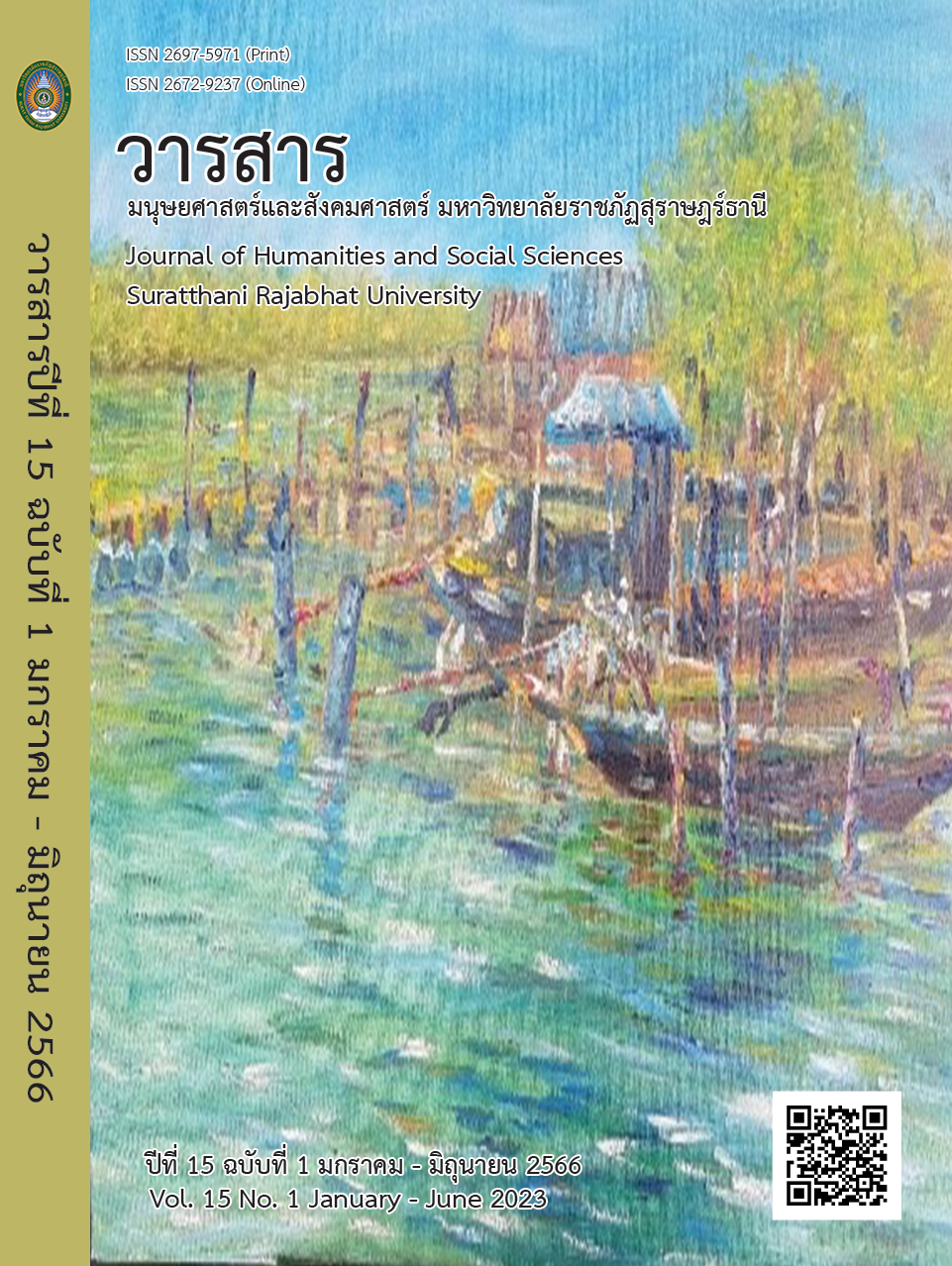The Grammaticalization to Conjunction of Verb “thaem” in Thai
Main Article Content
Abstract
This research article investigates the grammaticalization of the
conjunction of the verb "thaem" in historical Thai. The data were collected from the Thai National Corpus and prose works from the Sukhothai Period to the present (B.E. 2560). The information gathered was put into three
periods: 1) the Sukhothai Period, 2) the Ayutthaya Period up to the reign of King Rama III, and 3) the reign of King Rama IV up to the present. The
research findings were presented using an analytical description.
The results showed that the word "thaem" contained two functions. The first function is that of the verb, which can be divided into three types: intransitive verbs that mean "adding to," transitive verbs that mean "adding to," and transitive verbs that mean "adding something to,’ and a ditransitive verb meaning ‘adding something for.’ The second function is the
conjunction for ‘adding more content." The verb "theam" first appeared
during King Rama VI's reign and is now used as a conjunction.
The context conducive to the grammaticalization of the verb into the conjunction was the transitive verb with the meaning of 'adding
something to'. The grammaticalization was quite complete and progressed gradually. Notably, "thaem" was used as conjunction 84.29% of the time, while it was used as a verb 15.71% of the time. "Thaem" has been through the following two syntactic mechanisms: reanalysis and analogy. Moreover, it has been through semantic changes in metaphor and metonymy. Such grammaticalization resulted in 5 linguistic changes: 1) generalization,
2) recategorization, 3) specialization, 4) divergence, and 5) renewal. The grammaticalization was also found in gradual changes in a linear fashion. The results demonstrated the grammatical trend in Thai and the functional and semantic change of the verb into the conjunction, which could be examined through grammaticalization.
Article Details

This work is licensed under a Creative Commons Attribution-NonCommercial-NoDerivatives 4.0 International License.
All published manuscripts have been verified by peer-peer professors in the fields of humanities and social sciences. Reprinting of the article must be authorized by the editorial staff.
References
กิ่งกาญจน์ เทพกาญจนา. (2559). กระบวนการกลายเป็นรูปไวยากรณ์. กรุงเทพฯ:
โครงการเผยแพร่ผลงานวิชาการ คณะอักษรศาสตร์ จุฬาลงกรณ์มหาวิทยาลัย.
จรัสดาว อินทรทัศน์. (2539). กระบวนการที่คำกริยากลายเป็นคำบุพบทในภาษาไทย.
วิทยานิพนธ์ อ.ด. (ภาษาศาสตร์). กรุงเทพฯ: จุฬาลงกรณ์มหาวิทยาลัย.
นววรรณ พันธุเมธา. (2549). ไวยากรณ์ไทย (พิมพ์ครั้งที่ 3). กรุงเทพฯ: โครงการเผยแพร่ผล
งานวิชาการ คณะอักษรศาสตร์ จุฬาลงกรณ์มหาวิทยาลัย.
ปราณี กุลละวณิชย์. (2544). เอกสารประกอบการสอนชุดวิชา ภาษาไทย 3 (พิมพ์ครั้งที่ 9).
นนทบุรี: มหาวิทยาลัยสุโขทัยธรรมาธิราช.
ปาเลอกัว, และ ซอง-ลาตีสต์. (2542). สัพะ พะจะนะ พาสาไท. กรุงเทพฯ: สถาบันภาษาไทย
กรมวิชาการกระทรวงศึกษาธิการ.
ไพทยา มีสัตย์. (2540). การศึกษาคำช่วยหน้ากริยาที่กลายมาจากคำกริยาในภาษาไทย.
วิทยานิพนธ์ อ.ม. (ภาษาไทย). กรุงเทพฯ: จุฬาลงกรณ์มหาวิทยาลัย.
ราตรี แจ่มนิยม. (2546). การศึกษาคำบุพบทที่กลายมาจากคำกริยาในภาษาไทย.
วิทยานิพนธ์ อ.ม. (ภาษาไทย). กรุงเทพฯ: มหาวิทยาลัยศิลปากร.
วิจินตน์ ภาณุพงศ์. (2524). โครงสร้างภาษาไทย : ระบบไวยากรณ์. กรุงเทพฯ: มหาวิทยาลัย
รามคำแหง.
สุรีเนตร จรัสจรุงเกียรติ. (2551). ยัง : การศึกษาเชิงประวัติ. วิทยานิพนธ์ อ.ม.
(ภาษาไทย). กรุงเทพฯ: จุฬาลงกรณ์มหาวิทยาลัย.
อุดม วโรตม์สิกขดิตถ์. (2539). ไวยากรณ์ไทยในภาษาศาสตร์. กรุงเทพฯ: มหาวิทยาลัยรามคำแหง.
อุปกิตศิลปสาร, พระยา. (2545). หลักภาษาไทย. กรุงเทพฯ: ไทยวัฒนาพานิช.
Hopper, P. J. & Traugott, E. C. (2003). Grammaticalization (2nded.)
Cambridge: Cambridge University Press.
Kurylowicz, J. (1965). The inflectional categories of Indo-European. Heidelberg:
Winer.


